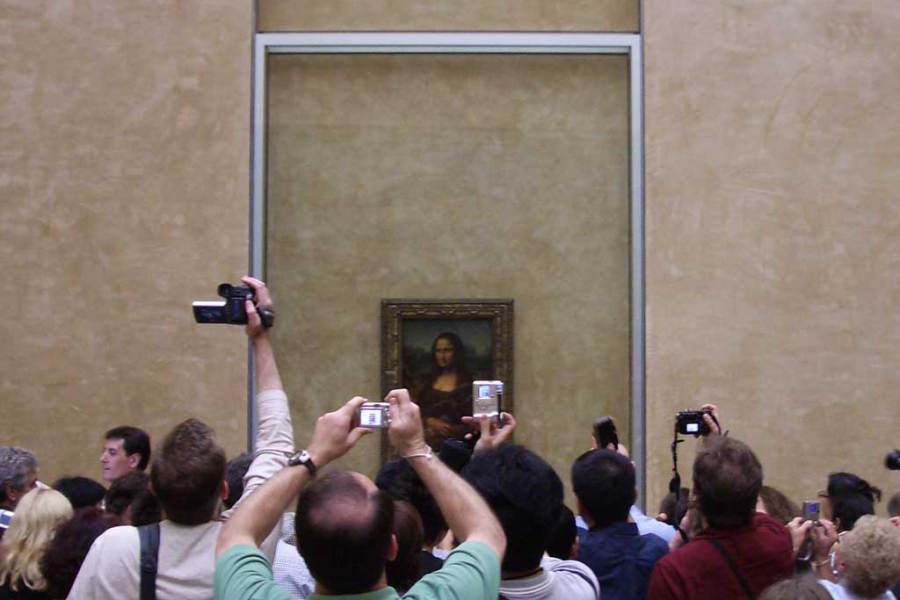At the State Hermitage Museum earlier this summer, I spent some time watching the visitors. Many were in large tour groups and traipsed from room to room, plugged into headsets relaying their local guide’s official three-hour route through the vast collections. Most visitors – of all ages and nationalities, and in tour groups or alone – also carried digital cameras, video cameras, tablet devices or smart phones. They stopped in front of most works just long enough to get a good snap of them.
On the second floor, I paused in front of Picasso’s Two Sisters (The Visit), that moving, enigmatic painting of 1902 in which some intimate moment of mourning is played out in a mysterious nocturnal landscape. Perhaps a metre from the work – which is protected by a glass or Perspex box – I noticed a number of small red lights flurrying across it, on the two figures and their faces – as if a crew of schoolboys were fixing laser-pointers on their teacher’s retina. ‘Scusi, scusi’ came a call from behind me. Could I move out of the way? Could I step back? I was obstructing someone’s photograph.
It is time for many major museums to rethink their rules on photography. While it may be laudable for museums to have allowed photography in the first place – accepting that museum-goers’ personal photographs are hardly likely to interfere with their commercial interests in selling images for reproduction – in practice there can be few more inane tourist photos than wonky, ill-lit, hastily snatched pictures of paintings.
As we all know, the digital camera has encouraged a rampant proliferation of everyday image-making; and while it may have democratised photography and its processes, it has also made for a lack of discretion and selection when it comes to taking photos – and a dissipation of thought. This is of course exaggerated in the context of museums and galleries, where the fact that something can be photographed freely and easily becomes the reason to photograph it freely and easily.
People who store a museum collection on their memory card neither look at these paintings as paintings as they stand before them, nor consider the works’ formal or material attributes when they later download them on to their hard-drives. What are these photographs for? A box-ticking exercise, matching paintings that are already well known in reproduction with bad reproductions of them? A way of owning an image or experience? Or something else? Giving visitors carte blanche to take hundreds of photographs is a fine way to quash any fledgling critical engagement with art. If this sounds ill-humoured, then it’s supposed to. The amateur paparazzi who stalk through galleries have a way of disrupting the experience of any other visitor who might want to pause, consider and let thought unfurl in front of a painting. In the Louvre last year, an American woman, gesticulating with her digital SLR, bluntly told me to shift as I stood before La belle ferronière. I pointed out that there was an excellent selection of postcards available in the carousel downstairs. ‘WHAT A JACKASS!’, she shouted through the gallery.
Charmless of me, no doubt, but the point must stand. The Instragramming and Facebooking of Titian portraits and Constable landscapes is ludicrous. It is manifestly an obstacle to how gallery-goers should be encouraged to look at and think about art. Let’s ban the snappy gratification – museums should be teaching us to look closely, not carelessly.
